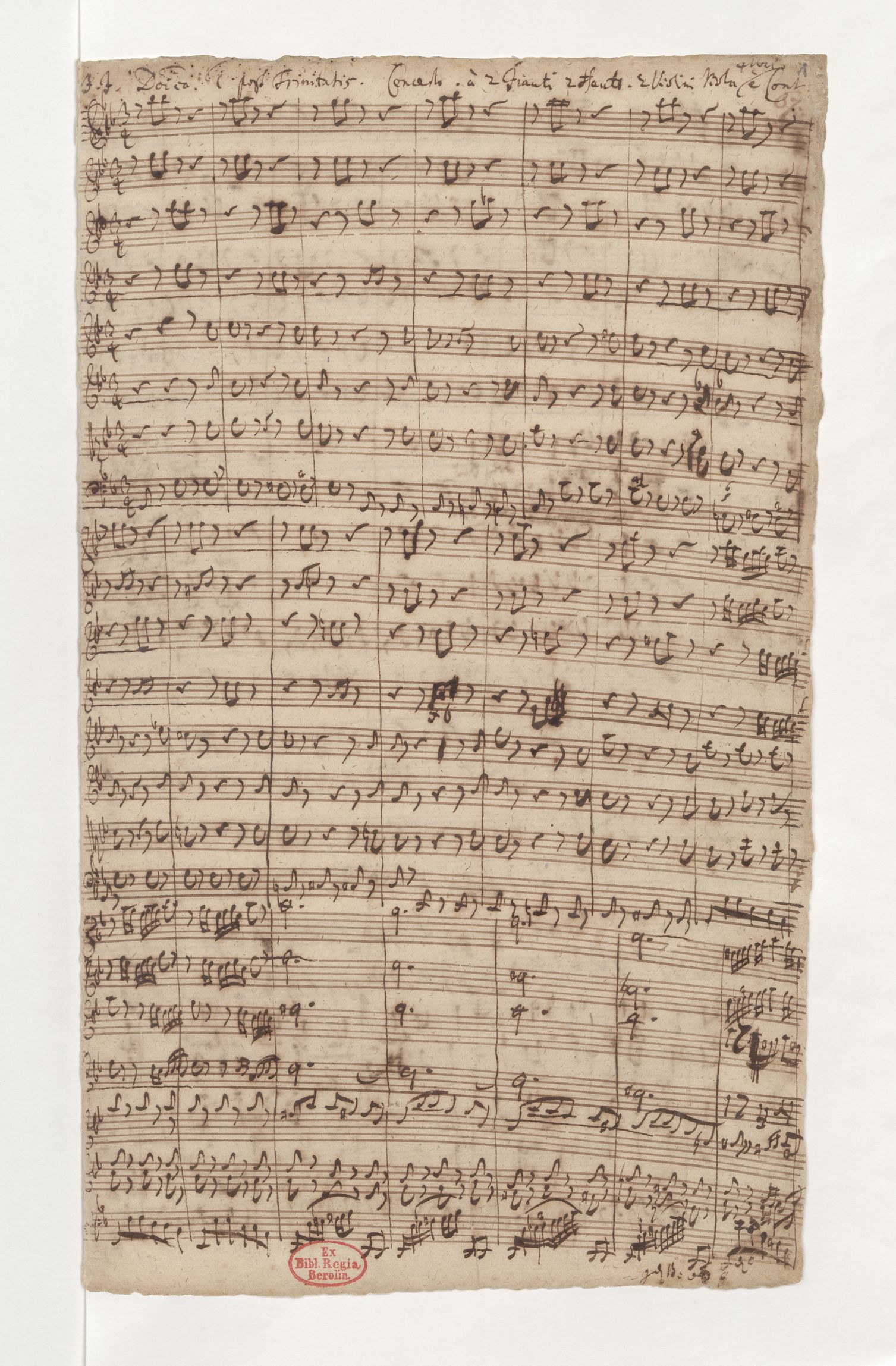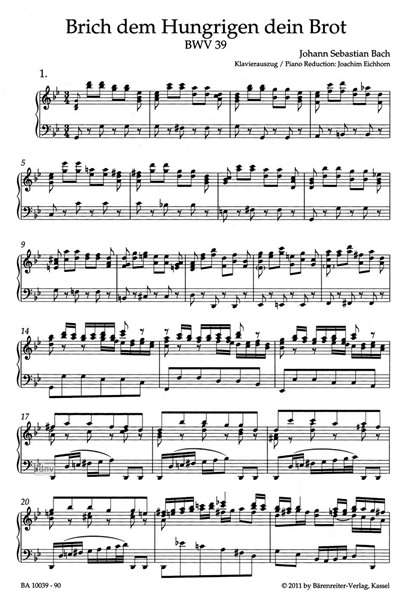Brich dem Hungrigen dein Brot, BWV 39
The hungry thy bread ( BWV 39 ) is a church cantata by Johann Sebastian Bach.
Formation
The cantata was composed for the first Sunday after Trinity of the year 1726, 23 June, and part of the third Leipzig cantata cycle.
Theme and structure
The prescribed readings for the Sunday were 1 Jn 4:16-21 LUT, "God is love ", and Luke 16:19-31 LUT, the parable of the rich man and Lazarus. Theme of the cantata is based on the Gospel call to charity, in the first sentence after the Old Testament Isaiah 58.7 to 8 LUT, in the central 4th movement after the New Testament Hebrews 13:16 LUT. The text of the final chorale is the 6th verse of Come, and let you teach the Gentlemen ( 1648) by David Denicke. The poet of recitatives and arias is unknown.
Formally, the siebensätzige cantata composed of two parts, which were performed before and after the sermon. It is arranged symmetrically around the 4th movement, which begins the second part and is entrusted to the bass soloist. Haunting vocals between arioso and aria resembles Bach's setting of Jesus words in his passions. Sentences 1 and 7 are in groups, 2 and 6 recitatives, 3 and 5 two-piece arias. The opening chorus follows the text in complex three-part structure, the first and third parts each consist of three sections.
Occupation
- Voices: solo soprano, alto and bass, Tutti vierstimmig
- Orchestra: Recorder I / II, Oboe I / II, violin I / II, Viola, Basso continuo










